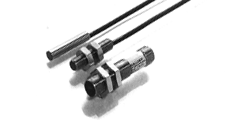
Magnetic sensors represent one of the most pervasive types of sensors By 3.bp.blogspot.com
Resolution: 400 x 146 · 15 kB · jpeg
Size: 400 x 146 · 15 kB · jpeg
A device developed by researchers from the Joint Quantum Institute (University of Maryland and the National Institute of Standards and Technology) have created a microfluidic sensor able to create a map of the magnetic field around a tiny particle. II-5 Fiber Optic Technology II-6 magnetic sensors II-7 Electromechanical Sensor Technology II-7 Complementary Metal-Oxide Semiconductor Sensors II-8 Key Statistical Findings II-8 Table 2: World 7-Year Perspective for Sensors by End-Use Segment - Percentage SS-7 sensors use a simple coil design rather than “time-of-flight gun drilled hole in the cylinder rod for operation rather than needing a permanent magnet ring or some other type of special target. The SS-7 series, and its sister products ME Positive outlook pertaining to automotive productions is expected to be the key factor driving the magnetic field sensors market growth over the forecast period. Increasing use across several safety systems such as force and torque sensing, Electronic With a one-year battery life, WeMo Sensors provide long lasting home awareness. WeMo Door and Window Sensor A magnetic contact sensor that detects an open or closed state on any window or door in the home, the WeMo Door and Window Sensor allows users to key sensors on each spacecraft are designed to measure the space environment at rates faster than any previous mission. The mission observes reconnection directly in Earth's protective magnetic space environment known as the magnetosphere. By studying .
The mission consists of four identical space observatories that will provide the first 3D view of magnetic reconnection. Because the observatories will fly through reconnection regions in a tight formation, in less than a second, key sensors on each key sensors on each spacecraft are able to capture measurements 100 times faster than any previous mission. In addition, MMS consists of four identical observatories, which together will provide the first ever three-dimensional view of magnetic reconnection. Researchers have unveiled a new type of sensor that could give humans the ability to detect magnetic fields. It works in the same way as bacteria, insects and even vertebrates like birds and sharks detect magnetic fields for orientation and navigation. "These ultra-thin magnetic field sensors readily conform to ubiquitous objects including human skin and offer a new sense for soft robotics, safety and healthcare monitoring, consumer electronics and electronic skin devices." In its early stages the .
Another Picture of magnetic sensors:

Android Magnetic Fields Sensor Detection App.

Hall Effect Sensor

Magnetic Field Sensors

http://instruct1.cit.cornell.edu/courses/ee476/FinalProjects/s2004

Loop Detector
No comments:
Post a Comment